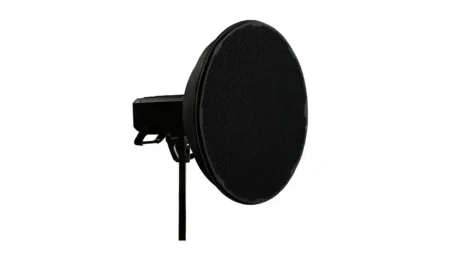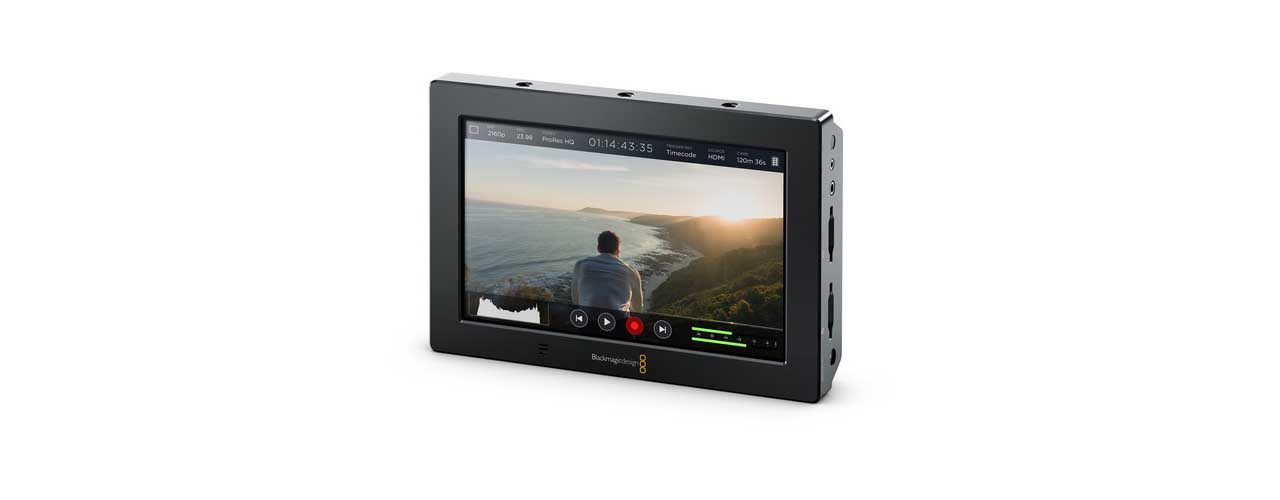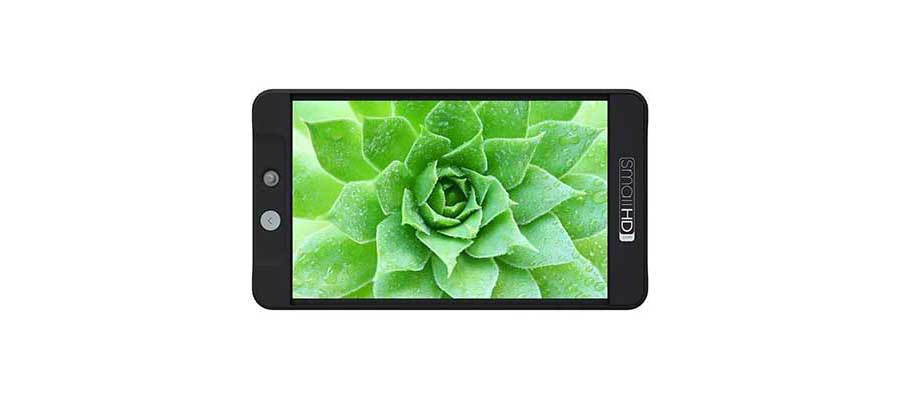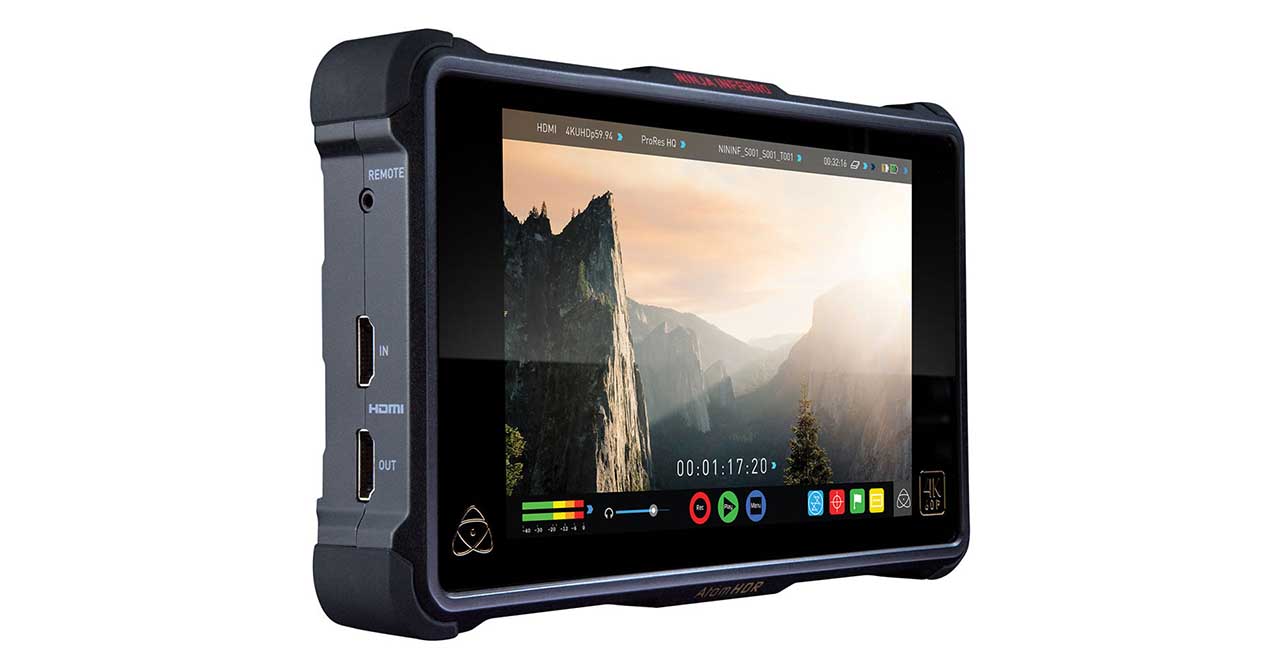As you get more experienced in shooting video you might want to consider investing in an external monitor to view your footage on a larger screen or an external recorder to record and store footage with more information in it. In this guide we look at the best external camera monitors and recorders, plus explain what they do, why you should consider using them and what benefits they offer filmmakers.
What you’ll learn
- Why you would use an external monitor/recorder?
- What monitors offer filmmakers
- The key benefits of recorders
- The benefits of monitors
- What are the drawbacks of monitors and recorders?
- Is it worth investing in a monitor or recorder?
What you’ll need
- A camera with at least HD or 4K shooting options
- An external monitor, recorder or monitor/recorder
When you start shooting video on a mirrorless camera or DLSR you’ll get used to viewing your video footage on the camera’s rear LCD screen, which are usually 3-inches wide or less. This is great when you’re starting out but such screens might make it difficult for you to view finer details such as zebra patterning, focus peaking and some of the details about how and exactly what you’re shooting. This is when an external monitor and/or recorder can prove useful – so what do they do and what benefits do they offer?
External camera monitors explained
External monitors usually connect to your camera via an HDMI connection and, once connected, the view your camera is seeing is shown on the monitor. The larger display of an external monitor – usually sized from five-inches across and upwards – allows you to see more details. You may have seen behind-the-scenes documentaries of making films and often you’ll see directors and directors of photography discussing a shot, or the framing of that shot, whilst viewing an on-set monitor screen.
More advanced monitors, such as those by Blackmagic, will allow you to see details such as zebra patterning, histograms, focus peaking and a range of grids and guides. Although you can pick up external monitors for under £100 there is an advantage in spending more to buy a monitor that can double up as an external recorder.
To be able to record to an external recorder via a HDMI connection the camera needs to be able to output a clean channel – that means not seeing all the details on graphics you would normally see on your camera’s LCD screen.
Once the footage comes out of the camera it’s recorded on to the device. Depending on the manufacturer footage may be record on to a CFast card, a solid-state disk drive or an SD card, so always make sure you are using a fast, compatible card. Some monitor/recorders feature options such as a LAN controller connector, which means you can start and stop recording on your camera from the device, and touch screen control of shooting parameters.
Key benefits of using external on-camera recorders
There are two main benefits to using an external recorder: to get a bigger, more informative preview as you shoot and to capture better quality footage. In terms of recording, the benefits come from a number of factors.
Understandably, most cameras that can shoot both stills and video have processors that are designed primarily for capturing still images. They also have to make significant compromises in the name of battery life and thermal management, since video isn’t their primary role.
For the most part, they’re designed to produce amounts of data that are manageable by consumers, and at bit rates compatible with relatively slow memory cards. This typically means heavily compressed video, often using what’s known as a group of pictures (GOP) video codec, which only records a full image at select key frames while interpolating the in-between images based on changes between frames. H.264 is an oft-used example of a GOP codec.
Recording to an external recorder offers you a range of video codecs. Depending on the camera you’re using these codecs will produce a far better result than recording video in-camera. You’ll be able to maximise the colour depth and the dynamic range. As a result, you can capture video with fewer compression artifacts, and usually in formats that work smoothly with major editing software, such as Apple’s ProRes and Avid’s DNxHD and HR.
External recorders are dedicated video capture devices developed and manufactured by companies – such as Atomos, Blackmagic, Convergent Design and SmallHD – who specialize in producing video capture products. They can’t improve the level of image detail that your camera initially captures, but they leverage the fact that your camera will often capture more picture detail than that which can be recorded using the internal codec.
For example, most cameras output a more detailed 4:2:2 stream over HDMI, rather than the simpler (more compressed) 4:2:0 footage they can themselves capture and compress. Hence you will hear people talking about 4:2:0 recorded internally and 4:2:2 recorded externally. Essentially, this means that use of an external recorder can give you more colour and image information in the footage.
Some cameras, such Panasonic’s GH5, will output 10-bit footage and can’t capture their very highest quality footage internally. External recorders also often support SDI connectors, a more robust type of connection typically used on professional video cameras. Many of the latest recorders support RAW footage over SDI, which means the recorder is future-proofed to operate for you beyond your current camera.
How much difference there is in the recordings will depend on the output from your camera – if it outputs at 10bit you’re going to get far better quality recording from an external monitor than you will in-camera. This extra quality comes in handy when you are colour grading footage or cutting in post-production.
External recorders will also often have better audio capture capabilities than those built into the mass-market capture formats seen in many cameras. As with the video footage, this is primarily a case of having more space dedicated on the screen, lower levels of compression and a wider range of settings and connectors.
Benefits of using an on-camera monitor
The monitor side of things, there are a lot more benefits than just having a bigger screen to see things with. The ability to see, and share, your scene on a larger screen makes it easier to spot any distracting objects and check focusing precisely. It can also help you better visualize the way your final footage will look, helping you make creative decisions such as choosing how much depth-of-field you want in a scene.
It’s also common for monitors to offer overlays and composition aids. For example, framing guides that show crops for different aspect ratios can be helpful if you intend to show your work in something other than the camera’s native aspect ratio. Also, freed from having to share battery power with so many other functions, external monitors can often be run brighter than the rear screen on your camera, thus making it easier to shoot outdoors.
But just as significantly, external devices often include useful monitoring tools that go beyond those offered in most cameras, both in terms of the range of tools available, and the precision with which they can be configured. It’s becoming increasingly common for cameras to offer focus peaking, to check where the point of perfect focus is, but zebra patterns, which highlights an area of a certain brightness, are still not universal.
External recorders also offer features such as focus peaking and zebra patterns, but often with greater control over their settings. The ability to choose to highlight a typical skintone brightness or everything exposed over 90% brightness, makes achieving consistent exposure much easier.
Another feature common on external recorders that isn’t on all cameras is the ability to apply colour and gamma curve correcting Look Up Tables (LUTs) – we’ll explain LUTs in more detail in a future Camera Jabber blog – to Log video in real time. This means that you can shoot gradable, but washed-out-looking, Log footage but with a preview that approximates the finished result, so you end up looking at something that’s much more visually accurate. This effectively gives you an approximate insight into what your footage will look like in post-production after some colour grading has been done.
Best external camera monitors and recorders
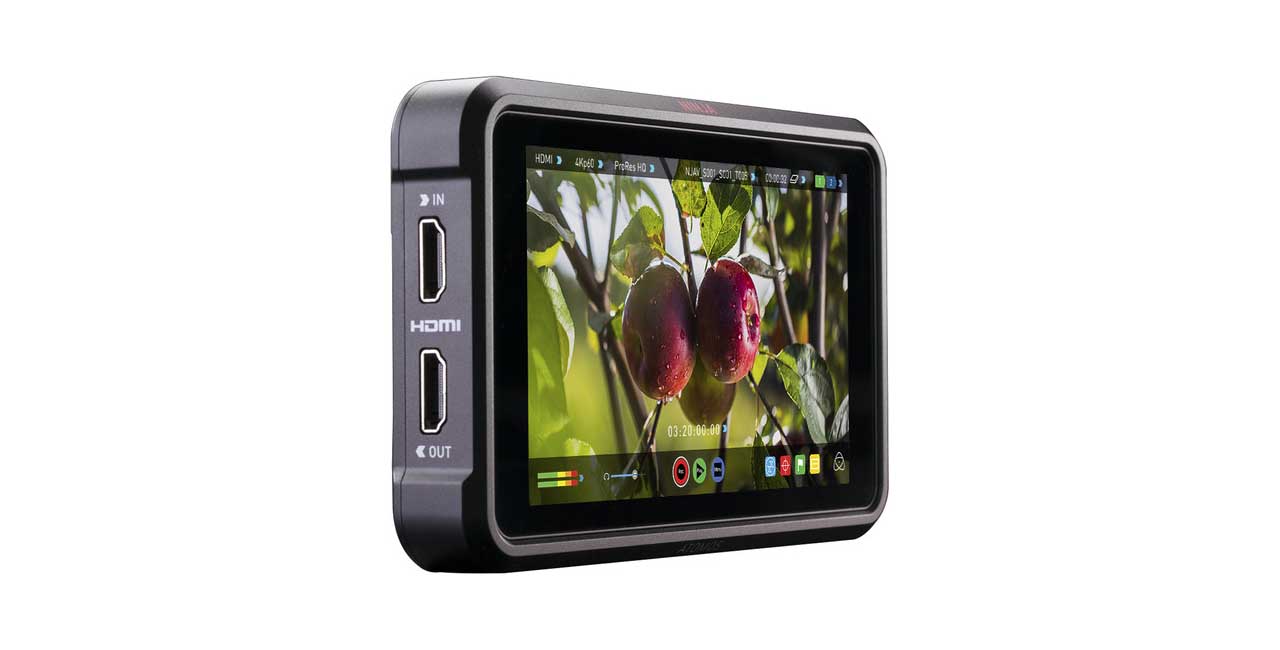
Atomos Ninja V
This 5-inch on-camera monitor/recorder can both play back and record DCI 4K, UHD 4K and HD video from purpose-built mini-SSDs. At 320g it’s great for when you want to travel light, but doesn’t compromise on picture quality.
The Ninja V screen displays 10+ stops of dynamic range and as a recorder lets you capture ProRes 4:2:2 raw video.
The Ninja V can record your footage to both AtomX SSDmini or standard 2.5-inch SSD drives. If using a 1TB drive this can store up to 150 minutes of 4K video.
Given it’s size and capabilities, the Atomos Ninja V is perhaps the best all-rounder on this list of best camera monitors and recorders. So much so that Nikon included it in its Z6 Filmmaker’s Kit.
Check out the full list of specs at B&H Photo Video or Wex Photo Video.
Blackmagic Video Assist 4K
Another combination on-camera monitor and recorder, the Blackmagic Video Assist 4K boasts a bright 7-inch, Full HD touchscreen display that records 10-bit 4:2:2 video up to UHD 4K at 30p to high-speed UHS-II SDHC/XC memory cards in dual card slots using Apple ProRes and Avid DNx codecs. Full HD video is supported at 50 and 60fps.
The touchscreen lets you quickly adjust settings like the histogram, focus peaking, audio and timecode display, and dual battery slots (Canon LP-E6 batteries) let you extend its life in the field.
Check out the full list of specs at B&H Photo Video or Wex Photo Video.
SmallHD 702 Lite
SmallHD’s robust 700 series are among the best on-camera monitors out there. Made of airline-grade aluminium the SmallHD 702 Lite is robust and built to last.
The 7-inch, 1280×800 HD monitor offers 400 nits brightness, features HD-SDI and HDMI inputs and uses both Canon LP-E6 and Sony L series batteries.
There are some nice design features, as well, such as a Joystick Zoom for smooth zooming and panning. Image controls include Anamorphic De-Squeeze, False Color, Focus Peaking, Image Flip, Pixel-to-Pixel Zoom, RGB Parade, Screen Markers and Waveform. There’s also the option to import LUTs via an SD card. You can then preview how an image will look using this LUT.
In fact, a signature feature of the 702 Lite is its Page Builder interface. This allows you to create customisable ‘pages’ on which you can preview scenes with different combinations of settings. You can then use the joystick to swipe between them to gauge which is best.
Check out the full list of specs at B&H Photo Video or Wex Photo Video.
Atomos Ninja Inferno
Atomos makes some of the best camera monitors and recorders on the market, which allow you to take full advantage of your camera’s sensor. Designed for 4K cameras, the Ninja Inferno can record DCI and UHD 4K at up to 60fps with a 10-stop range of brightness.
This brightness is enabled by Atomos’s AtomHDR display technology, which includes built-in presets to accurately translate popular log formats from Sony, Canon, Panasonic, ARRI, RED, and JVC cameras. What’s more, there’s a High Bright mode for Rec. 709 monitoring.
Video can be recorded in ProRes and DNx codecs, and there’s also the option to record in 4K and play them out in HD on existing monitors, TVs and other equipment. 1500 nits brightness promises easy daylight viewing, and there are a wide range of video tools to work with.
Really, the specs are many and comprehensive. Visit B&H Photo Video or Wex Photo Video for the full list.
Atomos Shogun 7
- Price: From £1500 / From $1500
- 15+ stops HDR display
Yes, it’s the third Atomos device on this list of best camera monitors and recorders, and no, it’s technically not released yet, but we’re adding it here for good measure as it looks to be one of the best on-camera monitor-recorders yet.
Let’s start with that 1500-nit display that provides 15+ stops of dynamic range. Using Atomos’s 360-zone backlight technology with 1,000,000:1 contrast ratio, the Shogun 7 promises a stunning colour gamut.
There’s real-time 4K recording to ProRes RAW, CinemaDNG, ProRes and DNx codecs. It can record ProRes RAW in up to 5.7K at 30p, 4K at 120p DCI/UHD and 2K at 240p DCI/HD, depending on your camera’s capabilities.
10-bit 4:2:2 ProRes or DNxHR recording is available at up to 4K at 60p or 2K at 240p. Four SDI inputs enable the connection of most Quad Link, Dual Link or Single Link SDI cinema cameras. It can also achieve data rates of up to 1.8Gb/s.
Atomos has also partnered with Dolby to create Dolby Vision HDR live, which enables users to see HDR live on set. Dolby helped achieve this by optimising its target display HDR processing algorithm, which Atomos has integrated in the Shogun 7.
Dolby Vision HDR brings real-time automatic frame-by-frame analysis of the Log or RAW video and processes it for optimal HDR viewing on a Dolby Vision-capable TV or monitor over HDMI.
What’s more, connect the Shogun 7 to a Dolby Vision TV and the AtomOS 10 operating system automatically analyses the image, queries the TV, and applies the right colour and brightness profiles for the maximum HDR experience on the display.
Shogun 7 records the best possible images up to 5.7kp30, 4kp120 or 2kp240 slow motion from compatible cameras, in RAW/Log or HLG/PQ over SDI/HDMI. Footage is stored directly to reliable AtomX SSDmini or approved off-the-shelf SATA SSD drives.
Drawbacks of monitors and recorders
As you might expect, there are also some down sides to using external monitors/recorders. Although each of the tools offered make it easier to set your shot up perfectly, this more precise way of working will almost inevitably slow down your workflow. Also, the added weight and bulk of carrying a second device around with you makes it much harder to ‘run-and-gun’ with an external monitor attached to or linked to your camera.
On top of this, it’s much less likely that you’ll go unnoticed with an additional screen attached to your camera. Even a relatively small monitor/recorder makes your set-up look more professional and consequently more obtrusive – a down side if you are trying to shoot discreetly.
It also takes a lot of battery power to run a screen and capture and compress video. Even the monitor/recorders with built-in cooling fans can run hot and hammer your batteries hard, meaning you’ve got more battery recharging to plan and worry about if you’re shooting on location.
Is the investment worth it?
As outlined above external monitors and recorder can help expand the range of things you can do with your current camera. They are non-brand specific, so will most likely to work regardless of what camera you buy next, and will help to boost the quality of everything you shoot.
You will have to take into account factors such as the connections your camera has, if your camera can simultaneously output 4K and record internally at the same resolution, and the storage compatibility your camera has with the monitor/recorders you are considering.
It’s perhaps fair to say that you may not decide to invest in a monitor, recorder or a monitor/recorder combo product until you’re more experienced at shooting video and instinctively understand the likes of histograms and zebra patterns. But once you have some serious shooting time and skills under your belt choosing and using external monitors and/or recorders can help you to get the very best out of the video footage coming out of your camera.



